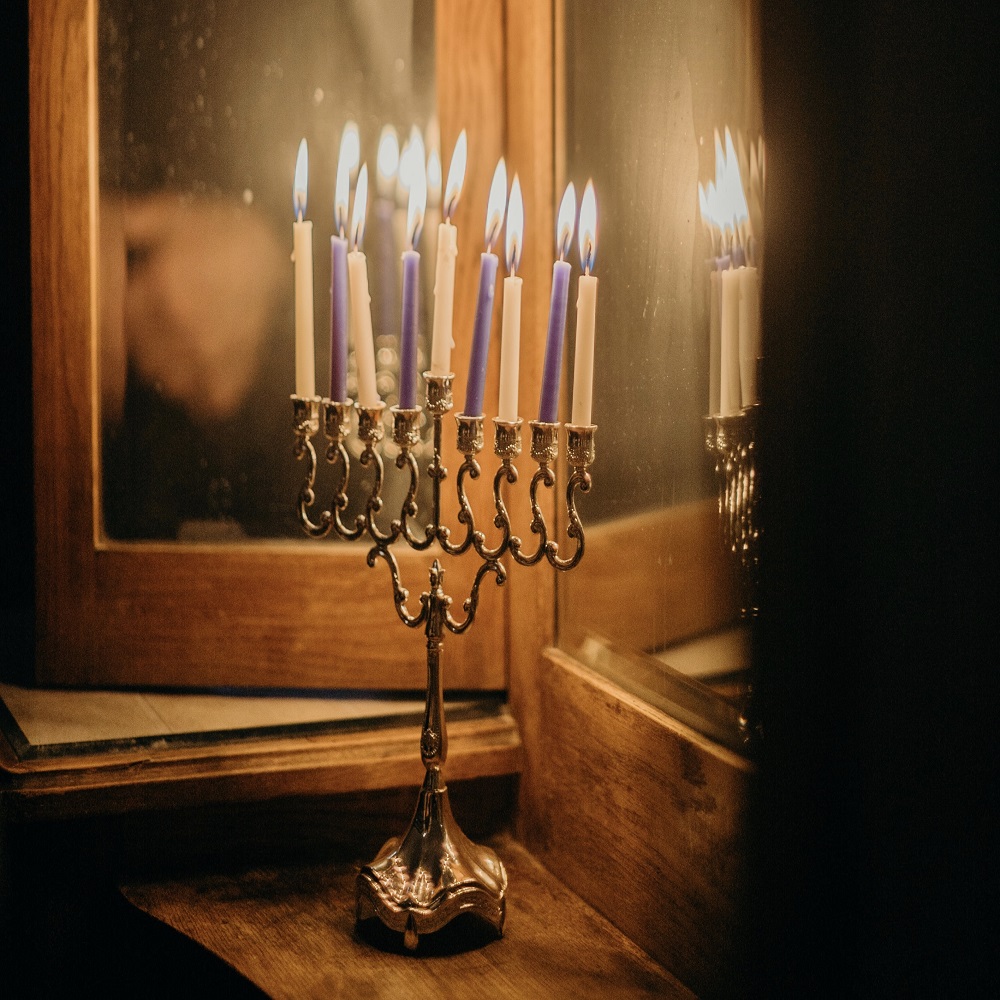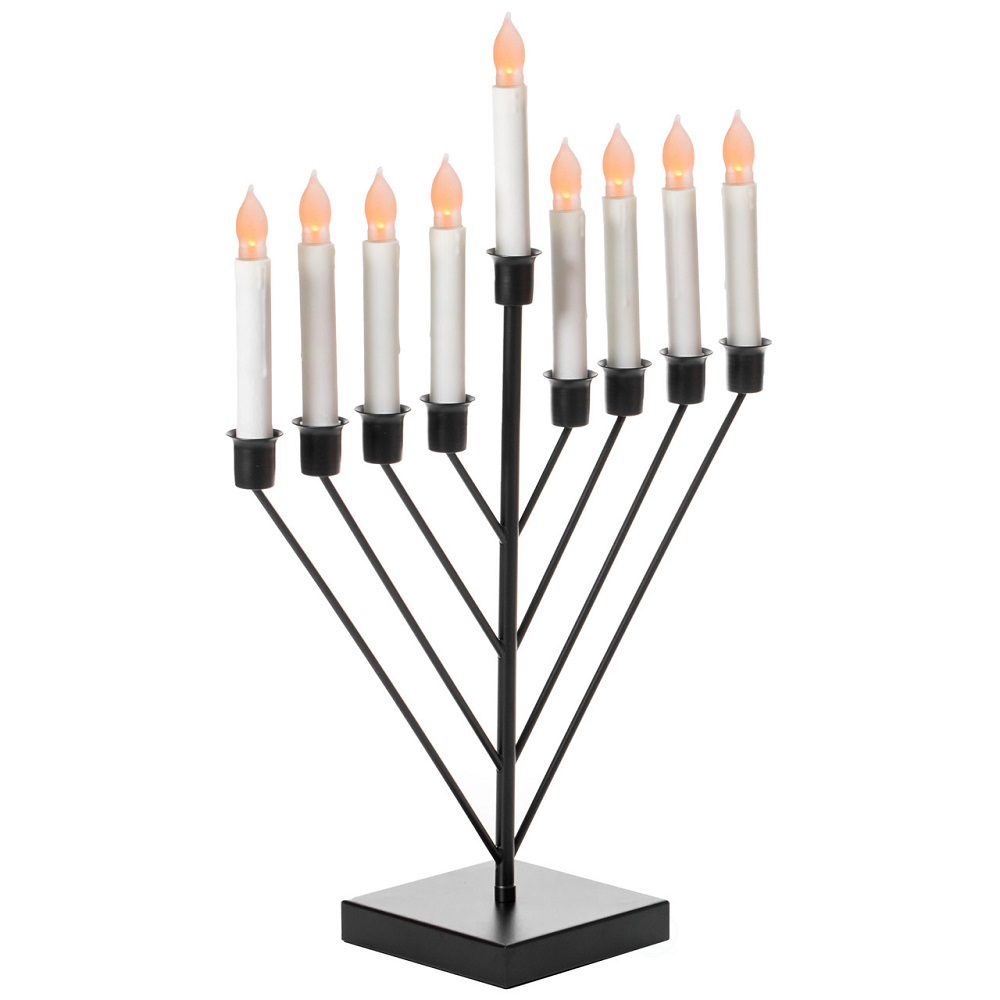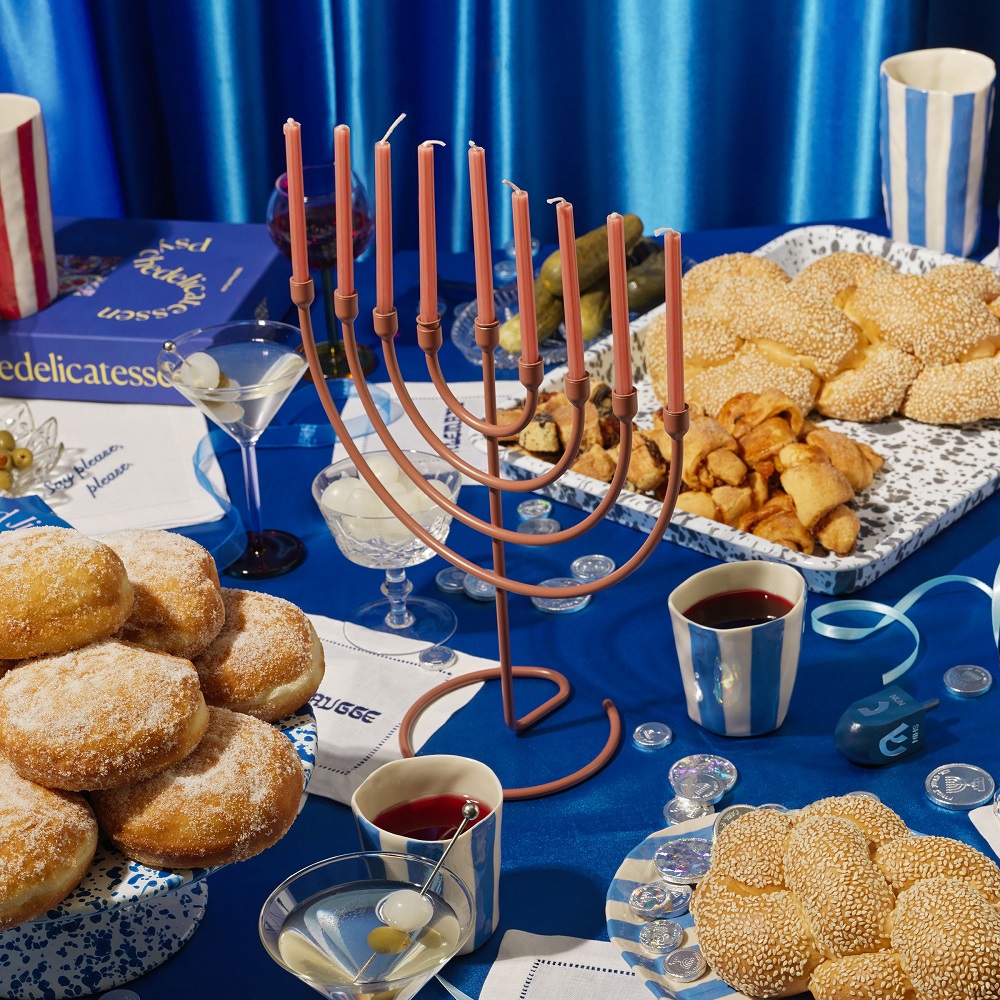Preparation for Chanukah Candle Lighting
Preparing for Chanukah candle lighting involves two key steps: selecting the appropriate menorah and acquiring all necessary items.
Choosing the Right Menorah
Select a menorah with nine branches. This includes eight for each night of Chanukah, plus one for the shamash. The shamash stands out, often in the center or on a different level. Traditional designs or modern styles both work, as long as the structure supports the candles securely.
Gathering Essential Supplies
Aside from the menorah, you’ll need enough candles for all eight nights – that’s 44 in total. Make sure to have a lighter or matches ready. It is also a good idea to have something to catch the wax, like foil or a tray, to keep surfaces clean. If you prefer, oil and wicks are an option instead of candles. Don’t forget the blessings, printed or memorized, to recite during lighting.

Menorah Placement and Set-Up
Proper placement and set-up of the menorah are crucial for a fulfilling Chanukah celebration. This section guides you through selecting the right location for your menorah and arranging the candles correctly.
Selecting the Correct Location
Choosing an ideal location for your menorah enhances the visibility and safety of the candle lighting. The traditional practice is to place the menorah near a window facing the street. This not only publicizes the miracle of Chanukah but also allows passers-by to view the lit candles. However, ensure the menorah is set on a stable surface and away from flammable materials to prevent accidents.
Arranging the Candles
When setting up your menorah, place the candles from right to left, which aligns with how Hebrew is read. On the first night of Chanukah, insert only two candles: the shamash (helper candle) and one additional candle for the first night. Each subsequent night, add one more candle to the left of the previous ones until all eight are displayed on the final night. Always light the candles from left to right, starting with the newest candle added. This method highlights the progression and adds a nightly anticipation to the ceremony.
The Lighting Procedure
Proper lighting is crucial to observing Chanukah and honoring its traditions. Each step must be carried out with care to fulfill the ceremonial significance.
Lighting Sequence and Direction
To start, place candles in your menorah from right to left, just as Hebrew text flows. However, light them from left to right. Begin with the newest candle each night. This respects the addition of each new light symbolizing the miraculous eight days. The shamash, or helper candle, is crucial. This candle is always lit first and used to ignite the others, no matter which night of Chanukah it is.
Reciting the Blessings
Before you light the candles, recite the blessings. On the first night, there are three blessings to chant. From the second night onwards, only the first two are repeated. These blessings connect us to the historical and spiritual essence of Chanukah. They are a key part of the ritual, involving praising and acknowledging the miracles performed during the times of the Maccabees.
Variations in Traditions Between Ashkenazi and Sephardi Communities
Ashkenazi and Sephardi Jews follow slightly different customs for this ritual. Ashkenazi Jews light the shamash first and use it to light the other candles. In Sephardi practice, an extra candle, not the shamash, lights the others first. After all candles are lit, they light the shamash. This difference enriches the cultural tapestry of Jewish observance worldwide.

Shabbat Adjustments During Chanukah
During Chanukah, the intersection with Shabbat introduces unique adjustments to the candle lighting tradition. These modifications ensure adherence to Jewish laws particularly about lighting fires on Shabbat.
Candle Lighting Times on Fridays and Saturdays
On Fridays, light the Chanukah candles before the Shabbat candles. This is to avoid creating a new flame after Shabbat begins, which is forbidden. Usually, Chanukah candles are lit after sundown, but on Fridays, they must be lit while it is still daylight. On Saturdays, wait until Shabbat ends at sundown before lighting the Chanukah candles. This schedule respects the prohibition against lighting a fire during Shabbat hours and aligns with the traditional observance of both holidays.
Performing the Havdalah Rituals
On Saturday night, the Havdalah ritual, which marks the end of Shabbat, comes into play. Opinions differ on whether to light Chanukah candles before or after Havdalah. Most Sephardic communities perform Havdalah before lighting the Chanukah candles. However, Ashkenazi practice varies, with no clear consensus. It’s important to follow the tradition of your community or consult with a rabbinical authority for guidance. These rituals highlight the reverence for both Shabbat and Chanukah, maintaining the sanctity and the distinctiveness of each observance.
Key Rituals After Lighting Chanukah Candles
After the Chanukah candles sparkle to life, several beloved rituals often follow. These moments deepen the holiday’s joy and meaning.
Singing Traditional Songs
Jews around the world celebrate Chanukah with music. Traditional songs like ‘Ma’oz Tzur’ echo through homes. Families may sing together, their voices merging with the candlelight’s warmth.
Playing Dreidel
A playful game of Dreidel often comes next. The four-sided spinning top features Hebrew letters. Each letter points to a fun action with chocolate gelt or nuts. It’s a game that reminds us of history while we play.
Enjoying Hanukkah Treats
No Chanukah is complete without special treats. Foods like latkes, fried potato pancakes, and sufganiyot, jelly-filled doughnuts, are favorites. They’re not just delicious; they represent the oil miracle of Chanukah.
Understanding the Significance of Each Candle
Hanukkah is rich with symbols, and the candles are a main focus. Each candle lit over the eight nights of Hanukkah stands for more than just a way to count the days. They represent the miracle of a small oil supply burning for eight days. Lighting one more candle each evening reflects the growth of joy and miracles in our lives. It’s also a call to increase our good deeds and light in the world.
Symbolism and Reflection
On Hanukkah, we reflect on the victories and miracles of the past. Each shining flame tells a story of freedom, faith, and hope. The increasing number of candles, from one to eight, represents strength and perseverance. It urges us to contemplate the value of resilience and courage in the face of darkness.
The Role of the Shamash
The ‘shamash,’ or helper candle, holds a special role. It’s not just the light used to ignite the others. It stands apart, usually higher, to remind us of those who lead and teach. The shamash symbolizes our duty to share our knowledge and light with others. Just as the shamash gives light to the other candles, we too are encouraged to be a guiding light for those around us.

Keeping the Tradition Alive
Chanukah’s traditions bind generations and encourage engagement in time-honored rituals. But how do we ensure these customs resonate with the future?
Teaching the Next Generation
Enthusing young minds starts with active participation. Involve them in preparing the Chanukah candles and menorah. Turn each night’s lighting into a storytelling session, sharing stories of the Maccabees and the miracles. Teach children to recite the blessings. This education instills a deep connection and ensures the preservation of Chanukah traditions.
Incorporating Modern Elements While Retaining Tradition
Maintaining relevance is key in a dynamic world. Introduce digital tools, such as apps for blessings or virtual menorah lighting, to captivate the tech-savvy generation. Plan community Chanukah parties using social media for broader reach and engagement. However, always intertwine these modern approaches with the traditional values and rituals of Chanukah to keep the essence alive. Offer a blend of old and new to enrich the celebration while staying grounded in the festival’s heritage.

